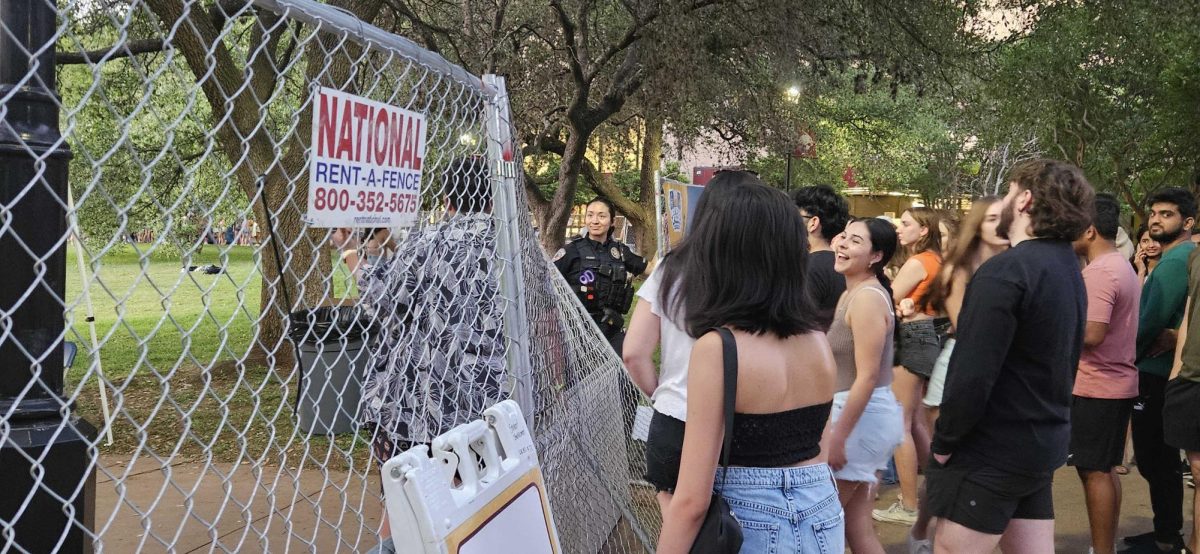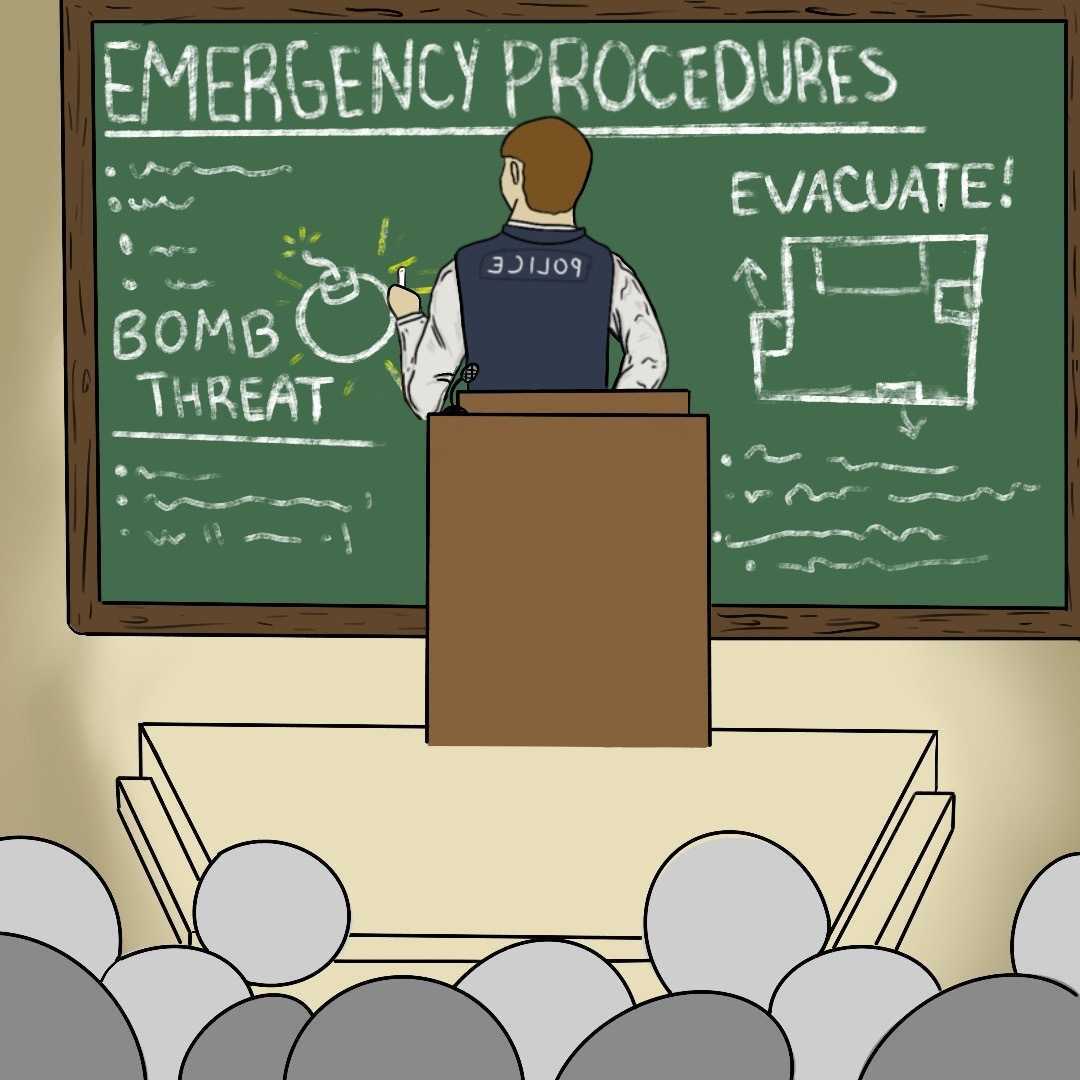As a community, we try to direct our political efforts and funding toward institutions and programs that serve our best interests. The only reasons to defund would be if those funds are misused or could be put to better use elsewhere.
Local law enforcement should be defunded as its funding has been over-expanded. The funds have not been utilized effectively, and more can be accomplished by putting that money elsewhere.
The ultimate goal of defunding the police, not abolishing, is to improve the criminal justice system. Cities across Texas, including Austin and Dallas, recognize the efficacy of this approach and are addressing measures to limit the use of force and requesting cuts to their police departments’ budgets. San Marcos and Hays County need to follow suit.
The City of San Marcos Annual Budget Report shows that in 2017, voters approved a $32 million fund for public safety and library expansion efforts. Of that, local police were to receive $5.6 million for facility renovation, which has now been expanded to $11.6 million.
Since this budget approval, overcrowding and scarce increases or improvements to police facilities or functions have remained a problem. Since 2017, police personnel resources have increased by the equivalent of only two full-time positions. All of this is supplemental to its existing annual budget of approximately $18 million. This budget, and any potential increase to this budget in the future, is far too expensive.
Hays County and the City of San Marcos have spent too much on an ineffective system. The overcrowding that Hays County criminal justice system faces has recently led to an outbreak of COVID-19 in the Hays County Jail.
The plan introduced in response to this overcrowding, when the problem was also prevalent in 2017, was to outsource prisoners to surrounding counties and jails. This plan of outsourcing and expanding the Hays County Jail now faces a pandemic combined with limited finances as the plan has increased costs by nearly 7,000% since 2014.
Local organizations like Mano Amiga seek to reinvest the $4 million dedicated to outsourcing inmates from the existing $51 million budget given to law enforcement in Hays County and place it toward restorative and community-oriented programs and resources.
Costs are only going to continue to rise if we keep investing in these initiatives, and we will continue to see little returns. These approaches are not working.
Earlier this year, the San Marcos Police Association pushed back against the city’s now passed Cite-and-Release ordinance which aims to guide officer discretion and reduce low-level arrests. This ordinance and the upcoming Cite-and-Divert program, in theory, may help the problem of overcrowding and potential over-policing, but much of the damage has already been done.
The San Marcos City Council has promised more action to address criminal justice reform in regards to the San Marcos Police Department. It must not only promise action but the right kind of action. Increases to funding and the expansion of budgets for supplies and facilities are not the appropriate solutions.
Not only have our law enforcement officials been given a large sum of public money, but there has been little to show for it while alternatives exist.
The solutions offered by our local law enforcement officials have failed so far to overcome the challenges of viral outbreaks and have been subject to public objection. The approach being taken by local officials is not only one that is presently ineffective but is one that we have seen before.
The idea has been that more police, and more spending on the police, should lead to a decrease in crime and to a safer society. According to Dr. Howard Henderson, founding director of the Texas Southern University Center for Justice Research, this has “not been the case for some time.”
The lack of evidence to suggest positive results and the falling rate of approval for increasing law enforcement funding suggests a need for a new answer to our problems. Merits of defunding the police range from nonviolent service calls to the improvement of mental health services, the environment, homelessness and general funding of social services, all of which are aimed to better our community and our lives.
In response to the argument of defunding the police, one may ask what we are to do without law enforcement in the event of persistent crime; however, this idea confuses defunding police with the abolition of the police. The goal is not to abolish, it is to improve the criminal justice system.
The current methods of achieving that goal of improved criminal justice are focused on raising the police budget to expand on personnel and public safety. However, over 60 years of data show that spending more on police budgets does not necessarily produce less crime. The opposite reigns true as studies show the reduction of police presence can effectively reduce crime.
If our goal is to reduce crime and improve our community, education is the safest investment. The immediate and long-term effects of bolstering access to educational resources can transform the lives of individuals and push entire communities toward success far into the future.
Not only is education a consistently beneficial investment for a community, but this is especially true given the challenges our education system faces.
Local public educators are forced to operate amid a pandemic and reallocate their funds toward private institutions under Betsy DeVos. The need for funding has already been illuminated by a recent request from Rep. Erin Zwiener (D-Texas) in which she and other leaders call for the Texas Education Agency to reimburse public schools for COVID-19-related costs amid public education budget cuts across the country.
The funds exist, but they need to be put where they belong—in our schools.
The necessity of restructuring our approach is felt now more than ever as Texas schools plan to reopen this fall.
In light of these decisions, San Marcos CISD is attempting to plan for re-opening based on guidelines from the TEA, which Superintendent Michael Cardona says “did not provide much guidance.” The pressure to re-open, while also having the necessary resources to do so, is felt by Texas State and SMCISD as proposals for procedure put staff and students in a practical, and political, battle.
The school year is fast approaching and education needs those funds now.
Directing funding toward our local public education is just one of the many steps we can—and should—take toward a better system and a better society. When it comes to our immediate needs and any hope for lasting change, defunding offers solutions that our local law enforcement officials have failed to deliver.
Defund the police for a safer community and a better future.
– Hunter Griffith is a general studies senior





















